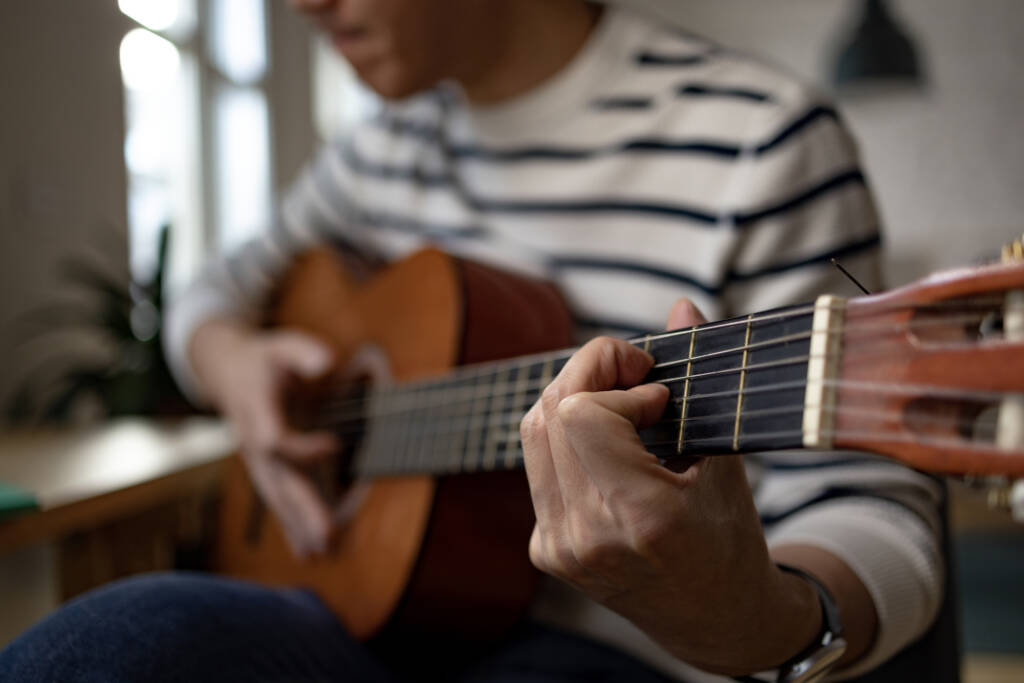
Ukulele 1b

This is the second part of the Ukuele course.
If you’ve ever dreamed of learning to play the ukulele, this is your chance. Whether you want to play the ukulele for your family and friends, desire to be a professional performer, or just love playing music, this course is a great place to start. No prior music experience is needed. You will learn the fundamentals of music and the basic skills necessary to play a wide variety of music styles. Your guide will take you through each step of this journey towards becoming a skilled ukulele player and musician. This course can be used as a performing/fine arts credit to meet the art requirement for high school graduation.
Major Topics and Concepts
Module 05 Expanding Your Reading Skills
After completing this module, you will be able to:
- Read and play a melody in 3/4 time using standard music notation.
- Read and play a five–note melody using standard music notation.
- Develop strategies for improving practice skills.
- Read and play two melodies using notes on three strings.
- Identify rest symbols in standard music notation.
- Read and play a melody using notes and rests.
- Read and play the C major scale using standard music notation and ukulele tablature.
- Read and play a melody (with C, D, E, F, G, A, B, C) using standard music notation.
- Compose a piece of music using standard music notation.
Module 06 Expanding Your Chord Skills
After completing this module, you will be able to:
- Strum an accompaniment to a song using the primary chords in the key of C major.
- Identify the C major, F major, and G dominant seventh chords by listening.
- Understand the history and influence of the 12–Bar Blues form in American music.
- Strum the 12–Bar Blues progression using the primary chords in the key of G major.
- Identify the G major, C major, and D dominant seventh chords by listening.
- Strum an accompaniment to a song using the primary chords in the key of A minor.
- Identify the A minor, D minor, and E dominant seventh chords by listening.
Module 07 Ukulele Ensembles
After completing this module, you will be able to:
- Understand how to play music along with other people.
- Identify characteristics of ensembles by listening.
- Play the melody and countermelody of a ukulele duet.
- Play each part (melody and chord accompaniment) of a ukulele duet.
- Analyze an ensemble music score.
- Identify the elements in a music composition.
- Understand the many roles of music in society.
- Describe common styles of music.
- Identify ways people relate to music.
- Describe characteristics of Irish music.
- Recognize and interpret basic eighth–note rhythm patterns.
- Play a traditional Irish melody on the ukulele.
- Describe characteristics of reggae music.
- Use downstrokes and upstrokes to strum basic eighth–note rhythm patterns on the ukulele.
- Play a chord accompaniment in the reggae style on the ukulele.
Course Materials
You will need a playable ukulele (soprano, concert, or tenor) and a way to record and submit a video performance to your instructor. Because of the differences in tuning, baritone and bass ukuleles are not appropriate for this course.
A ukulele is “playable” if it is the correct size for the ukulele player, is easy to press the strings down against the frets, and plays in tune up and down the fretboard. There are three common types of ukuleles: soprano, concert, or tenor. If you do not already have a ukulele, you may want to seek the advice of an experienced ukulele player, a ukulele teacher, or your local music store.
Most ukuleles are strung for right–handed players, so that the right hand plucks the strings and the left-hand presses the strings down against the frets. Many left–handed ukulele players play right–handed ukuleles. Many ukulele players and teachers recommend that left–handed students try
playing on a right–handed ukulele when first learning. However, most ukuleles can be restrung for playing in a left–handed position if necessary. This course is taught using a right–handed ukulele. Students choosing to use a left–handed ukulele will need to adjust accordingly.
Competencies
Common Time Signature
Students will demonstrate an understanding of common time signature by describing ¾ time, explaining the read and play music process and creating a composition in 4/4.
Cultural Music
Students will demonstrate an understanding of cultural music by summarizing Irish and summarizing Reggae music.
Music Ensembles
Students will demonstrate an understanding of music ensembles by describing playing music in a group, analyzing ensemble music, and analyzing music scores.
Musical Chords
Students will demonstrate an understanding of musical chords by describing the major chords, summarizing the 12-Bar Blues, and demonstrating playing the minor chords.

